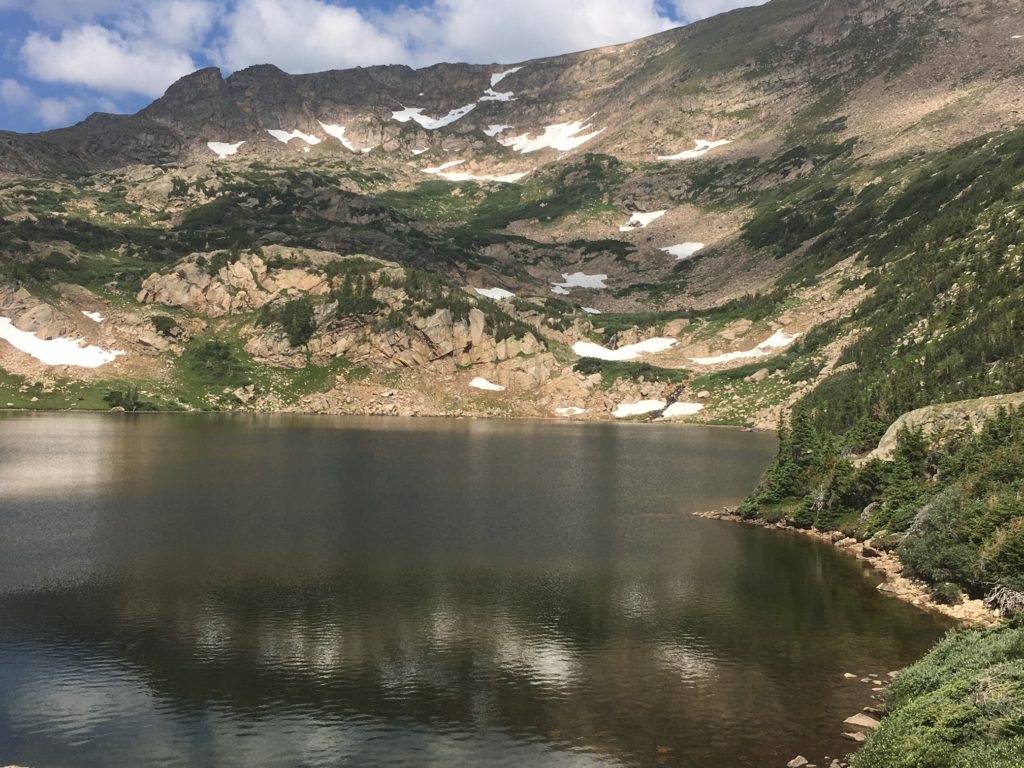
Skyscraper Reservoir in the Indian Peaks Wilderness
As I walked down the trail, I glimpse the sign in the distance. Weathered, the light brown color fading, it marks a special boundary. Indian Peaks Wilderness. While this sign in simple terms means relatively little, in larger terms wilderness symbolizes so much more. Particularly in the world we live in now, of overcrowded cities, and an ever increasing reliance on technology.
The Wilderness Act of 1964, created the National Wilderness Preservation System and defined wilderness as “an area where the earth and its community of life are untrammeled by man, where man himself is a visitor who does not remain.” The Act further specified wilderness as “an area of undeveloped Federal land retaining its primeval character and influence without permanent improvements or human habitation, which is protected and managed so as to preserve its natural conditions . . . .”
With 765 distinct wilderness area, wilderness now encompasses over 100 million acres of federal lands. These wilderness areas are managed by several different federal agencies — Forest Service, BLM, National Park Service and the US Fish and Wildlife Service. Wilderness areas don’t happen overnight, they are passed as legislation with only congress being able to designate wilderness.
For me, living in Nederland, I have become intimately acquainted with the Indian Peaks Wilderness. I refer affectionately to the Indian Peaks as my back yard, with the nearest trail head being a mere 15 minutes from my home. Designated in 1978 with wilderness protection, it is now one of the most visited wilderness areas in the country due to its close proximity to Denver and Boulder.
Most wilderness areas prohibit the use of motorized equipment, as well as prohibiting the building of permanent roads. For me, I treasure the quiet of the wilderness — a place where I can go and contemplate in peace, with only the sounds of nature to accompany me. Whatever my stresses or problems, a hike in wilderness grounds me and washes away my fears, reminding me of all that is beautiful around me. Wilderness comforts me, knowing it is the quintessential primeval forest.
I also find that I connect with my spirituality in wilderness. Being out in the wild, enjoying the majesty of the mountains, the quiet splendor of an alpine lake, or watching a pika gather grass for its winter cache all remind me there is something else greater than me in this world. Something big enough to create nature’s own cathedral. Something big enough to help me find solutions to my biggest problems.
For people living in urban areas, wilderness can take them away from the noise and hectic nature of the city. It’s a place to reconnect with nature, something scientists tell us bring about greater contentment and better health.
Today, most people treasure the beauty and solitude of wilderness. But is wasn’t always so. Early pioneers feared wilderness as a “dark and dismal place” with wild beasts who could harm you. There was so much unknown about the wild. And what is unknown is often feared.
As we become attache to our computer and smart phones, it becomes important to unplug ourselves. A walk in the wilderness teaches us a simpler way of life, even if only for two or three hours. We are present and tuned in. Enjoy!

